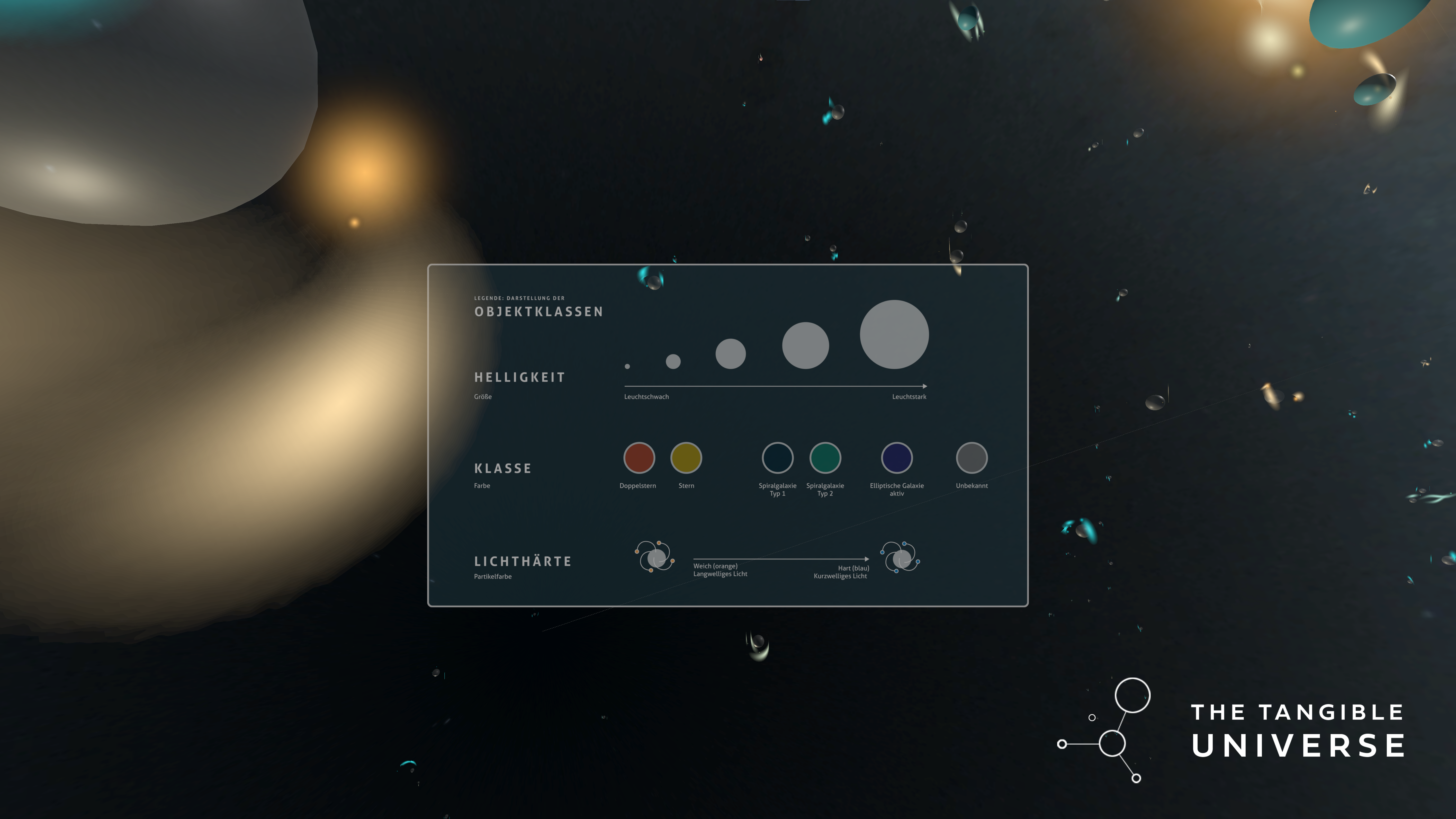The Tangible Universe
Interactive Design, 6. Semester, supervision Prof. E. Schöls
ARS Electronica Festival Campus exhibition 2019
6. Science Fiction Festival Munich 2019
featured in PAGE Magazine Volume 01.20
A virtual experience for laymen and astronomers that visualizes X-ray data of astronomical objects from the ESA satellite XMM-Newton. Data of over 1,000 astronomical X-ray sources generate unique data objects. The sizes, colors or haptic feedback of each individual object represent observational parameters such as source brightness, class, or energy. An observer can move freely within our galaxy and explore each object to study its radiation. A special feature is the ability to sort the objects based on their parameters which allows for discovering underlying structures of the data set.
ESA XMM-Newton Mission: sci.esa.int/xmm-newton/
ESA GAIA Mission: sci.esa.int/gaia/
X-ray data set: 8.lamp.le.ac.uk/extras/archive

Free download
You have a HTC VIVE, a Windows PC and want to take a swim in the Tangible Universe? So click on the link below, unzip the folder and execute the TTU.exe app. Enjoy the swim! Let me know what you think!
The application is published under the Creative Commons BY-NC-ND license.
Visualizing X-ray Data in Virtual Reality
The virtual space corresponds to a sphere where the background image is an all-sky observation by ESA’s optical satellite GAIA. It shows the Universe from Earth’s point of view, as it would be visible by our own eyes.
The data set of X-ray sources holds information on observational parameters such as brightness, coordinates, photon energies, or source type. These parameters are used to generate individual unique data objects which are located with respect to the galactic plane, corresponding to their real galactic coordinates.
The data defines the size, color, or haptic feedback of each data object. A menu describing how the data forms the objects can be envoked with the Vive Controllers.
The user can interact with each data object which will display the numeric data of each X-ray source. Additionally, an audio player explains the particular astronomical object (such as stars or spiral galaxies) produces X-rays. A legend on the numerical data can also be enabled via the Vive Controllers. On top of that, the user can sort the objects with respect to their source type which will reveal underlying structures of the data set.









